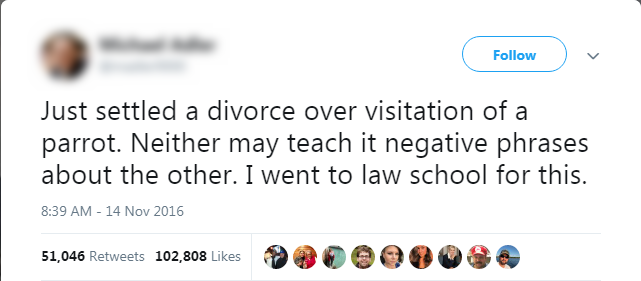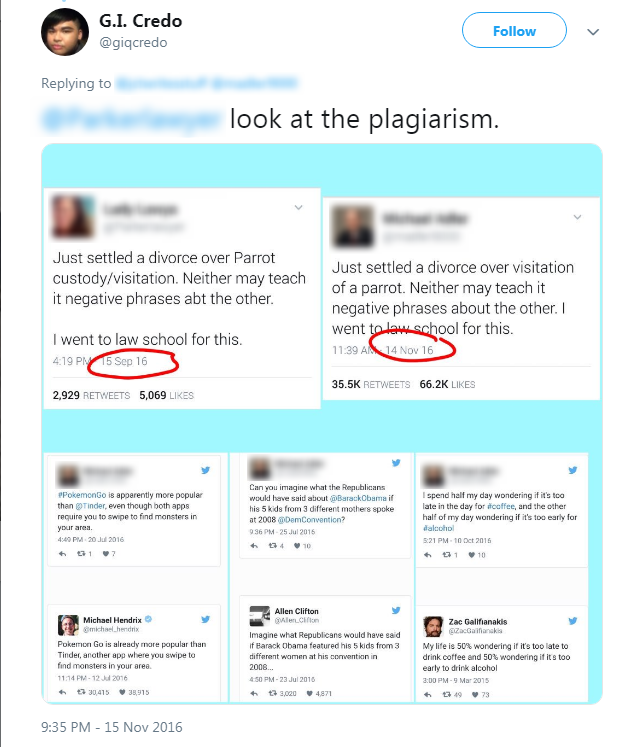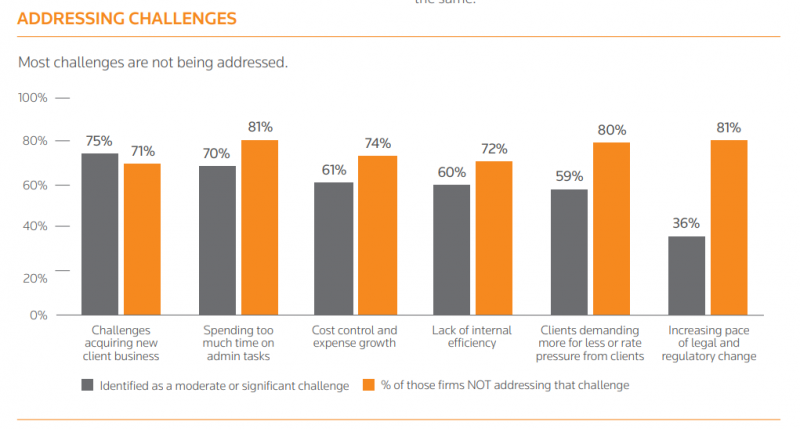
It’s a powerhouse many attorneys don’t use effectively.
I’m talking about LinkedIn. When it comes to LinkedIn, attorneys are unsure about where to start. It isn’t because attorneys are unwilling or incapable of using the platform successfully.
It’s because they don’t know how.
Most of the posts on attorney LinkedIn marketing cover generic details. This information, while helpful, fails to produce the traffic, clients and revenue attorneys need.
LinkedIn is a two-edged sword
LinkedIn is a problem for many legal professionals. Instead of using LinkedIn to boost their careers or build their firm, these attorneys unknowingly sabotage their firm/careers.
Sabotage? That sounds like hyperbole.
It certainly seems that way until you see an inappropriate mistake like this:
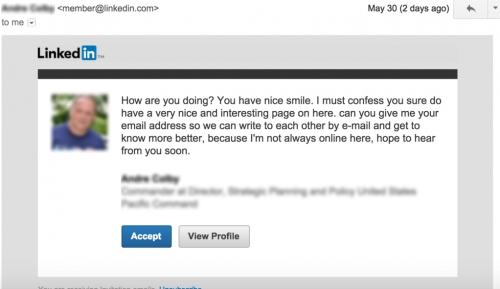
LinkedIn has its own set of social norms and etiquette requirements. They also have more than 600 million users. It’s no surprise then that these social media faux pas occurs on such a regular basis. What is surprising is the fact that your career/firm can be hurt by a mistake made by someone else.
It’s unfair, but it’s an unfortunate reality.
Violate LinkedIn or social media etiquette and you endanger yourself or your career. Respond inappropriately to a mistake made by someone else, and the result may be the same.
Maybe it’s better for attorneys to avoid LinkedIn.
That’s certainly the easy way out but it comes at great cost. Facebook, is perfect for consumer-focused firms. If you’re a B2B attorney, LinkedIn is an outstanding way to connect with powerbrokers, influencers, kingmakers, and clients.
It’s business-to-business focused.
What specifically can you do with LinkedIn?
LinkedIn comes with a few significant benefits. The kind of details that make rainmaking simple, efficient and automatic.
-
- Serve your clients, peers and the industry
-
- Build authority, influence, reach and prestige
-
- Connect with powerful allies
-
- Build a stable platform that’s filled with prospective clients
- Attract and convert those clients
Here’s the problem.
Most people on LinkedIn approach business development like this:
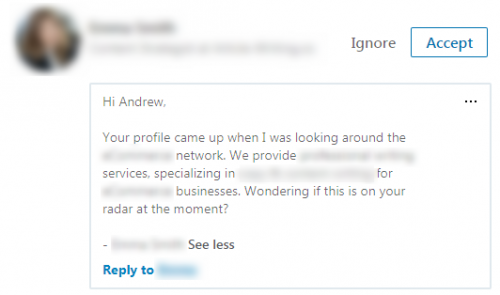
They lead with a self-serving offer. They’re not focused on adding value and they’re definitely not interested in getting to know you personally. They’re simply focused on extracting as much money (or resources) as they can from as many people as they can.
Here’s why most professionals fail to achieve any sort of measurable long-term benefits from LinkedIn. It’s their giving profile. Adam Grant PhD, Wharton professor, management consultant and author of the book Give and Take states there are three kinds of givers.
- Takers are self-focused. They put their interests ahead of the needs of others. They try to take as much as they can from others while giving or contributing as little as they can in return. Takers know they’ll be rejected by most people so they use agreeableness to pretend to slip under our radar. This is how these fakers worm their way into our inner circles.
- Matchers preserve balance. If you take from them, they’ll take from you. If you give to them, they give to you. It’s painful for matchers to receive benefits without reciprocating. When they encounter takers they’re quick to punish them and/or return the favor.
- Givers. These people are altruistic givers who go out of their way to share their time, knowledge, resources, connections and support with those around them with no strings attached and no expectation of return. These givers come in two varieties: (1.) Selfless givers come in last. drop everything to help people all the time. (2.) Otherish givers are smart, strategic and wise about their giving.
What’s your reciprocity style? If you’re unsure, you can take the quiz here.
Wait a minute.
Why does your reciprocity style matter here?
I thought we were talking about LinkedIn for attorneys
Why are we focused on these irrelevant details? Each one of the LinkedIn benefits I mentioned earlier depends on one simple trait.
Giving.
That’s right, your reciprocity style determines the overall results you’ll receive from your LinkedIn efforts. The more giving you are, the better your results will be. The better you are at spotting takers (and fakers) the better your results will be.
This is essential.
If you’re a taker you’re far more likely to reject the strategies and tactics I’m about to mention. If you’re a matcher, you may find it difficult to achieve the level of results you’re looking for. The more you’re willing to give and serve, the more you get out of LinkedIn as an attorney.
This is the foundation, the most important component of LinkedIn.
Building your career/firm with LinkedIn
I’m going to assume that you’ve already completed the basic/generic steps needed to maximize your results. You have a high-quality headshot, you’ve completed and optimized your profile, added co-workers and colleagues, etc. Yes, these steps are generic but they’re also important.
You’ll want to choose the framework(s) you’ll use to build relationships. These frameworks give you the legitimate pretext you need to build a solid relationship with anyone and every one that reaches out to you.
Let’s take a look.
Framework #1: Teach the unaware
Education attracts information converts. Clients are drawn to education:
-
- Addresses their problems
-
- Soothes their fears
-
- Meets their desires
- Enables clients to meet their goals
Here’s how you use LinkedIn to create educational content that appeals to prospective clients.
- Join LinkedIn groups. You’re able to join a maximum of 50 groups. You’ll want to join groups with tangential sources. If you’re a startup attorney, join startup groups. Are you a real estate attorney? Join investor groups/clubs. Tax attorney? Join entrepreneur, homeowner or real estate groups – depending on your practice area or focus.
- Share content in your groups. You can approach sharing in one of three ways (1.) you share your own content exclusively (2.) you curate content from other thought leaders (3.) you share both original and curated content in your groups.
- Syndicate content from third parties. Share content written on your website, as guest posts or thought leadership on other sites, or via platforms like YouTube, Medium or SlideShare and syndicate it to Linkedin Pulse. Share previously written content on LinkedIn in three places. (a.) direct to your contacts via your feed (b.) via the LinkedIn groups you’ve joined in step one (c.) Syndicate content via LinkedIn publishing.
- Lead clients to you. You can use tools like Snip.ly to lead visitors back to your site, whether you wrote the content in question or not. You can share a link to an ultra-relevant landing page on your website so visitors can continue reading and learning because, remember, education attracts clients.
Framework #2: Protect the vulnerable
Have you heard of Krebs on Security? Brian Krebs is an investigative reporter covering cybercrime and computer security. He shares information on data breaches, data leaks and a host of other security topics. If consumers or corporations are in danger due to cybercrime, he’s the first to report it.
You can do the same.
This strategy depends largely on your practice area. Real estate, tax, and startup law are excellent practice areas. Why? Because these practice areas are evergreen. Clients in these areas need consistent help. Bankruptcy and criminal law, on the other hand, are temporary and transitional.
In an evergreen practice area?
Create daily, weekly or monthly alerts on a particular set of topics. Use legitimate problems and/or threats readers and prospective clients need to know about. You can outline…
-
- Federal, state and local statutes. Updated legal precedents
-
- Problems, threats, red flags, and important legal changes
- Areas of neglect, blind spots, and consequences (experienced by others)
Do this well enough and you’ll have competition. That’s a problem because well enough means competitors have a chance. You’ll want to dominate the competition, but how? You take your content further than your competition. You can do this by:
-
- Design: You create beautifully designed resources, reports and data that require more time and attention than your competitors are willing to spend to create their content.
-
- Data: Your content relies on exclusive or proprietary data or data that are inaccessible to the public. You consistently have more data points than your competitors.
-
- Depth: You offer readers a deep dive into the alerts you provide. You create content that’s comprehensive, answers reader objections, addresses reader fear and risk.
- Drama: You share captivating stories and create stimulating emotional experiences. Your content triggers intense discussion and debate. Readers are secretly addicted to you and the (valuable) drama + education you provide.
Choose one area and you’ll outperform your competitors consistently. Two and only the most motivated will compete with you. Three or more of these criteria and you build an untouchable brand.
Framework #3: Bring professionals together
Are you a people gatherer? The kind of extraverted professional who makes friends easily?
Become the matchmaker.
When you become a matchmaker you gain ready access to the powerbrokers, influencers, kingmakers, and clients that boost your career, build your firm and generate revenue.
And the best part?
Connecting with other influential professionals turns you into an influencer yourself. Connecting people who can help each other is one of the most useful skills an attorney can have.
Even better, there’s more than one way to do it.
-
- Introduce two people (professionals, prospects or clients) who can provide value to others
-
- Introduce two influencers to each other
-
- Introduce two people, but seed the relationship with an idea
-
- Host an event (e.g. webinar, conference, speech, dinner) but invite influential and complementary partners
- Nurture the relationships you spark with more connections
You’ll want to build a tangential business.
When anyone in your industry needs to connect with anyone else, they think of you.
This is a long term strategy.
Introduce people and organizations that can help each other. Give people what they want, seed the relationships with your incredibly valuable ideas, then track the positive results as connections, clients and revenue pour into your firm.
How does this turn into money?
You focus on giving. Work to create X dollars of value for each and every person you connect. Then, at a later date, capture Y value of X. This strategy isn’t as easy to control, but the rewards are pretty significant. This isn’t a one-off.
This is a lifestyle.
If you’re an extravert or you’re willing to connect with other people, this strategy is perfect.
The best part?
You can do this on LinkedIn or off. You don’t need to focus your time or attention on LinkedIn exclusively. In fact, I’d suggest that you take a different route.
Start the conversation on LinkedIn, end it in real life.
What does that mean?
Work to connect people via invites, requests, feedback or feelers on LinkedIn. Look for helpful connections that will add value. Then, create a plan to connect people off the platform – whether that’s via an email, text message, phone call, meeting or lunch.
Always add value. No exceptions.
LinkedIn doesn’t have to be a two-edged sword
As a platform, it can create tremendous value for your business. You just have to manage the details.
LinkedIn is a problem for many legal professionals. Instead of using LinkedIn to boost their careers or build their firm, these attorneys unknowingly sabotage their firm/careers.
This doesn’t have to be the case for you.
Most attorneys aren’t sure where to start. This isn’t because attorneys are unwilling or incapable of using the platform successfully. They’re simply unaware.
You’re in the know.
When it comes to LinkedIn, you know where to start. Begin with the right reciprocity style, create the right frameworks. Use these strategies consistently and you’ll create the LinkedIn powerhouse your firm needs to win.


